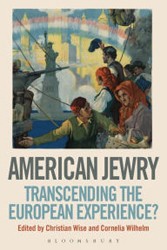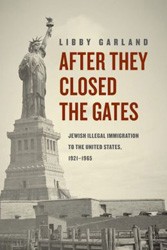With a rising demand for farm and industrial workers, America opened its portals to approximately 20 million immigrants between 1892 and 1924. Fourteen million of these new, mainly European arrivals entered through Ellis Island, which had replaced the aging Castle Garden facility located at the Battery on the New York City shore. In his detailed and engrossing narrative of those years, historian Ronald H. Bayor offers an eye-level account of the perilous “journey to Ellis Island.” While he mainly depicts the particulars of this early-twentieth-century moment, he still points to the eerie continuity between that time and twenty-first-century America. Bayor observes that “two ideological views shaped U.S. immigration policy and still play a role in contemporary America.” On the one hand, a positive spirit of “civic nationalism” welcomed “diversity” and promised “equality and fairness to all who came to the United States.” On the other hand, Ellis Island and especially Angel Island on the West Coast could also signify an opposing spirit of crude nativism, bigotry, and “racial nationalism.”
Bayor’s historical study is part of the promising new “How Things Worked” series published by Johns Hopkins. The series can appeal to an undergraduate as well as a general audience. Its aim is to trace and reconstruct the actual human experience of historical events and movements. Bayor thus wants to answer a specific question: “What happened to the immigrants along the journey to Ellis Island, and how did the processing of so many people work?” He wants readers “to walk through the whole immigration procedure, picture themselves as one of the immigrants or staff, and get a sense of how it felt to be there.” The author skillfully realizes this aim by clearly organizing his account of the immigration process. Bayor adds to his text by including illuminating photographs of the Ellis Island experience culled from public and national archives.
What especially emerges in these pages is an image of the newcomers’ fragile vulnerability. With pernicious “eugenic criteria” often swaying inspectors and medical staff, an aspiring immigrant could be rejected for poor posture or physique. Israel Bosak, for example, escaped Russian pogroms in 1906, but was turned away at Ellis Island since his “physical degeneracy” could threaten America “in relation to his progeny.” Immigration commissioner William Williams, in 1912, contrasted Northern Europeans with the “backward races” from Southern and Eastern Europe. In an article titled “Invasion of the Unfit,” Williams warned against the entry of “these lumps of poisonous leaven.” Such implacable prejudice was matched by the persistent criminality victimizing immigrants from the moment of their departure. A fortunate few were able to book second or even first class passage, which offered some initial protection. Nevertheless, once completing the exhausting inspection process at Ellis Island, the new arrivals were essentially “released into a mob of individuals bent on cheating and swindling them in one way or another.”
Bayor then carefully portrays the different ways America responded to the new arrivals. Authorities were always wary of potential “charity” cases, and every immigrant was subject to strict surveillance during a three-year probationary period. Still, the rate of rejection was just two percent, and there was an effort to respect the individuality and rights of the newcomers. By 1911 Ellis Island provided interpreters in thirty-seven languages, and such languages as Yiddish, Hungarian, and Italian were special requirements for the interpreters. One commissioner of Ellis Island even warned against “missionary” activity directed toward the “Hebrew immigrants.” He cautioned that “Christian tracts-printed in Hebrew” should no longer be “put into their hands.”
Nevertheless, a very vehement part of American public opinion held fast to the rigid ideology of nativist supremacy. In Bayor’s view, President Calvin Coolidge formalized these views with the enforcement of racial quotas and the signing of the National Origins Act in 1924. In a sadly revealing essay titled “Whose Country is This?” Coolidge expressed “a preference for Nordic immigrants and displeasure at the idea of intermarriage among Nordics and so-called inferior groups.“ Bibliography, index, notes, photos.
Related content:
- Statues and Golems by Helen Wecker
- From Grandfather to Father to Son by Joshua Henkin
- After They Closed the Gates: Jewish Illegal Immigration to the United States 1921 – 1965 by Libby Garland





